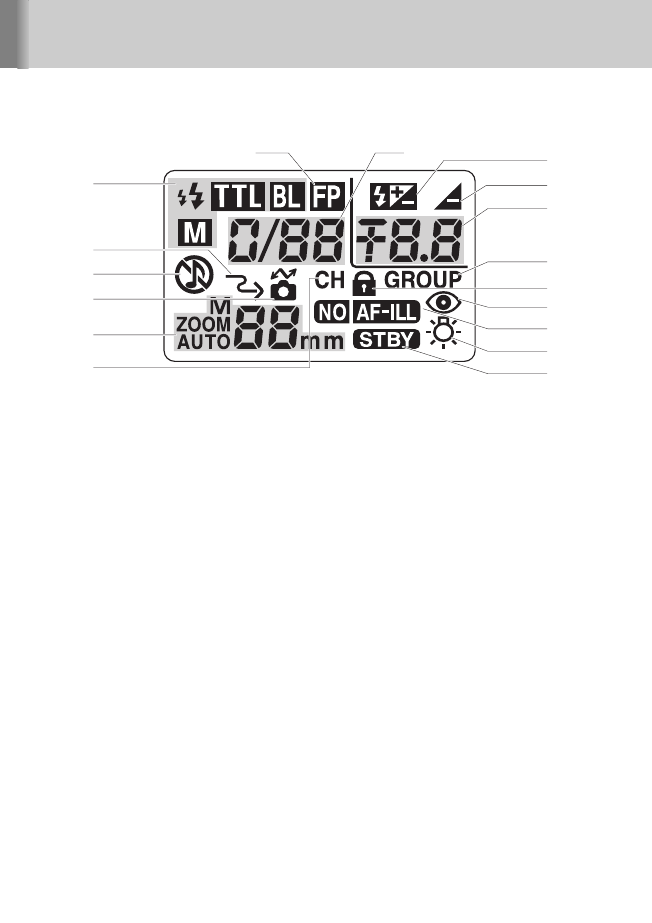
For reference, all indications are displayed in the illustration.
9
10
11
12
13
14
15
16
17
1
2
3
4
5
6
7
8
14
LCD panel
1 Flash mode (p. 26)
2 Wireless remote flash (p. 62)
In the wireless multiple flash mode,
the SB-600 is set as a remote flash unit,
which fires in sync with the master flash unit.
3 Sound monitor
(p. 67)
When the SB-600 is set as a remote flash unit,
you can monitor its operation by listening to
the beeping sound.
4 Compatible with CLS*
(p. 5)
The SB-600 is connected to cameras
compatible with CLS*.
5 Zoom-head position (p. 40)
6 Channel (p. 63)
Represents the communication channel
number through which the master and remote
flash units exchange data in the Advanced
Wireless Lighting mode.
7Auto FP High-Speed Sync
(p. 48)
The SB-600 automatically fires at faster
shutter speeds exceeding the camera’s sync
shutter speed.
8 Flash output level
(p. 34)
9 Flash output-level compensation
(p. 44)
10 Underexposure in TTL auto flash
(p. 29)
11 Flash output-level compensation
value
(p. 44)
Underexposure value in TTL auto
flash
(p. 29)
Indicates the underexposure value, showing
that the light might be insufficient in the TTL
auto flash mode.
Flash output level in Manual flash
(p. 34)
12 Group (p. 63)
Represents the group of each remote flash unit
in the Advanced Wireless Lighting mode.
13 Control buttons being locked
(p. 12)
Control buttons (except the ON/OFF and
FLASH buttons) are locked.
14 Red-eye reduction (p. 46)
15 AF assist illuminator (p. 51)
16 LCD panel illuminator (p. 15)
Pressing any control button turns on the LCD
panel illuminator.
17 Standby function (p. 21)


















